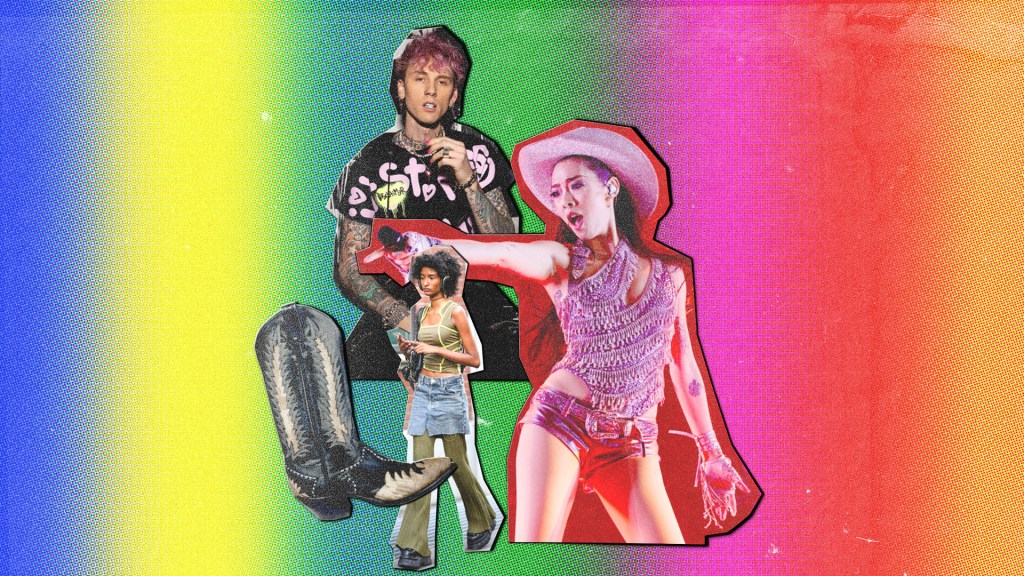Growing up in the late 80s in South Carolina, strangely enough, the presence of the Ku Klux Klan didn’t phase Paul Rucker. The black artist, cellist, and public speaker was part of an orchestra in his home state when he first witnessed them up close. “I remember once, I went outside for lunch and it was a beautiful day,” Rucker tells The Creators Project. “But there was a Klan rally happening, and they were wearing those white robes. It’s always stuck with me, but I wasn’t shocked at all. I was too young to be. I didn’t know I was supposed to be terrified of these folks.”
Rucker’s inquisitive nature back then reveals the underwritten side of history underlying his new exhibit, REWIND, on display at Seattle’s Center on Contemporary Art from July 7-30. “I started asking questions. I’d get, ‘Oh, they’re a bad group. They hate black people.’ But then I found it’s far more complicated than that. There were three waves of the Klan. The first wave started in 1865 with Nathan Bedford Forrest, who was a former slave trader. A millionaire slave trader. The second wave of the Klan was inspired after Birth of a Nation—that’s the name of my project. My Birth of a Nation is to make a new Klan outfit a week for a year.”
Videos by VICE
Today, Rucker has completed Birth of a Nation, a new Klan robe every week, made out of materials that range from sparkling spandex to African kente cloth. The robes reinsert an ugly part of America’s past that often gets swept under the rug, back behind museum waslls. The end result is jarring to look at, and the sheer number of robes on display points to how Rucker wants them to be seen as an integral prop in the course of history.
“The first wave didn’t actually have many members,” Rucker continues, “but the second wave had between four and five million during the 1920’s. That’s 15% of our population. And the Klan robes factory in Buckhead neighborhood of Atlanta had to have 20,000 robes on hand at all times to keep up with demand. They were a 24-hour factory… The Klan robes funded the movement.”
Rucker’s Birth of a Nation series went on display as part of his exhibit, REWIND, in Baltimore, where the artist currently resides. Rucker was brought to Baltimore by the Robert W. Deutsch Foundation, who funded his position at the Maryland Institute College of Art for two years.
REWIND Installation Time Lapse from Jimmy Best Productions on Vimeo.
“It’s part of our history. A big reason why I wanted to do this is because you can go to most museums around the world and they have Klan robes, but they don’t have them on display. There’s so many history museums that aren’t showing these artifacts, and it’s a part of history that really hasn’t been resolved or gone away. It just comes back in different forms. That’s what REWIND is all about.”
Rucker states that REWIND isn’t so much about race as it is about power. One part of REWIND is a data map video piece titled, Proliferation, that juxtaposes current US prison populations with US slave populations through time. According to the NAACP, African-Americans constitute one million of the 2.3 million incarcerated Americans, and though the US is only 5% of the world’s total population, it contains 25% of the world’s prison population. Through Proliferation, Rucker proves how slavery has not really ended at all.
“[REWIND] goes from slavery to our modern day prison system, and it talks about structures that have been in place during slavery and after…I think in order to have constructive conversations about race, power, disparity, or anything, we need to be fully informed. So I make a lot of work around the history that we were not taught in school.”
Paul Rucker is a Rauschenberg 2016 Artist as Activist Fellow. To learn more about REWIND, check out the website here, or see it for yourself at Seattle’s Center on Contemporary Art from July 7-30. To learn more about Paul Rucker, watch his TedTalk on his body of work.
Related:
Can Tumblr Preserve Black Contemporary Art?



